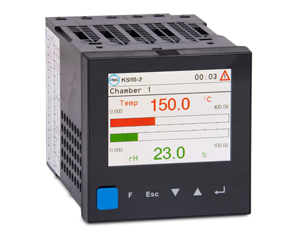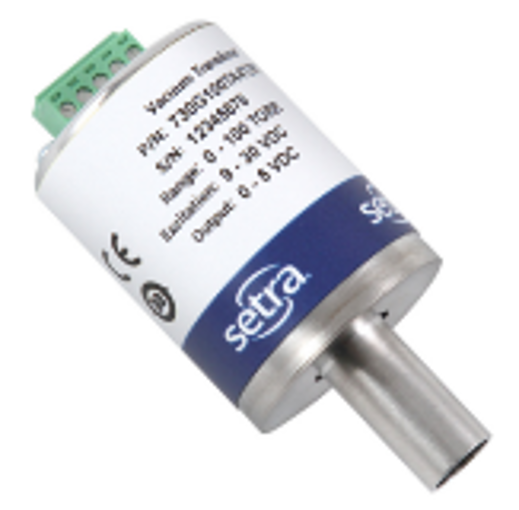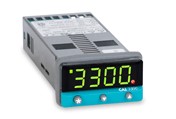Vaporized Hydrogen Peroxide Gas Plasma Sterilization technology sterilizes surfaces and equipment, eliminating harmful pathogens. Injecting hydrogen peroxide vapor into the chamber and then by applying an electric field (via radio frequency), or microwave energy, excites the hydrogen peroxide molecules into a low-temperature plasma state. These sterilizers are an essential part of medical and pharmaceutical settings. They provide a powerful and effective way to sterilize surfaces and equipment, eliminating harmful pathogens. However, to ensure that the sterilization process is successful, it is crucial to have quality products that can sense, monitor, and control the variables involved in the process.
Application Challenge:Finding a source for quality products to sense, monitor, and control the variables in Vaporized Hydrogen Peroxide Gas Plasma Sterilizers to ensure the highest sterilization efficacy. |
Deep vacuum pressure, the flow of vapor, cycle time, and chamber temperature can all impact the effectiveness of the sterilization process, and it is essential to monitor them closely to ensure that the process is successful. Sterilizers can even use a complete control system with a hydrogen peroxide monitor that measures the chamber sterilant concentration.
Application Solution:To ensure a successful sterilization process, it is crucial to have quality products that can sense, monitor, and control the variables involved in the process. At Gems & Setra, we provide products that are specifically designed to meet these requirements. With our sensors, real-time monitoring, and control products, you can be confident that your sterilization process is safe, efficient, and effective. |
Cycle Time
A complete sterilization cycle using H2O2 (hydrogen peroxide) gas plasma can be as short as 25 minutes and up to several hours depending on the type of equipment being used and the characteristics of the load (objects) being sterilized. The different phases within a complete sterilization cycle (pre-heat, vacuum, injection, diffusion, plasma, vent) are also controlled and monitored for programmed periods of time and sometimes include multiple sub-cycles of these phases.

Products: KS98-2 Multi-function Controller , Pro-16 Compact Profiler Controller , Pro EC44 Dual Process Profile Controller
Pressure
Pressure is typically ≤ 1 Torr for the vacuum phase(s). Vacuum level increases in the low Torr range, usually from 1-3 Torr during H2O2 injection phases. The diffusion stage (or exposure phase), when vaporized H2O2 comes into full surface contact with the objects, involves ramping up pressure to atmospheric level and then applying a vacuum to the chamber until levels again reach ≤ 1 Torr. That vacuum pressure is what causes the H2O2 to change to a plasma state, and it remains there during the plasma phase until pressure is increased or the chamber is vented back to atmospheric pressure.

Products: Setra Model 730 Vacuum Capacitance Manometer , PS61 Subminiature Pressure Switch
Temperature
Temperature is ramped to about 40-55°C to preheat the chamber. Although it is significantly higher than ambient, this is still considered “low-temperature sterilization” because other methods often require much higher temps (e.g. autoclaves). This temperature is held for the duration of the sterilization cycle, and maintaining precise setpoint accuracy is crucial.

Products: CAL 3300 Single Loop Controller, West 6100 Plus Digital Temperature Controller, MaxVU Rail DIN-rail mounted PID Controller
Flow Control (Valves)
The flow of hydrogen peroxide vapor from the H2O2 cartridge is injected into the chamber for a predetermined period. Any more or any less would render the sterilization ineffective, so accuracy and fast response time are important. Directional and on/off (flow/no-flow) control is necessary, and other factors such as chemical compatibility and life cycle ratings must be considered.
Products: Gems Solenoid Valves
Gems Sensors and Setra’s products have been field-tested around the world. Our sensors are highly accurate and repeatable, providing real-time data that can be used to adjust the process as needed. Our controllers are designed to provide precise control over the variables involved in all phases of the sterilization cycle. Our monitoring systems are highly configurable, providing data that can be used to optimize the gas plasma sterilization process. Partner with us for product solutions in your gas plasma sterilization application today.
 SEARCH OUR RESOURCE CENTER
SEARCH OUR RESOURCE CENTER

